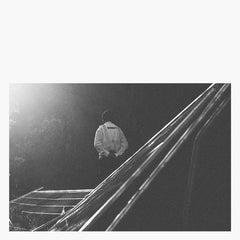Zimoun // Guitar Studies I-III CD + BOOKLET
- Availability:
This CD was released by Swiss experimental musician Zimoun in May 2022 on Australian experimental label Room5.Includes a booklet with dialogues and photos with label owner Lawrence English.Below is a commentary by the writer.
In this "Guitar Studies" series, we have only dealt with the sounds and noises produced by the guitar.
There is an orthodox way to play the guitar by hand, but it was more often driven by a smaller DC motor.I used various microphones for recording, loose pickup contact, and various amplifiers.From small toy amps that are partially flawed to beautiful Magnatone amps with analog tremolos from the 60s to old Fender amps that I first bought with my guitar when I was 10 years old.
In addition, the recorded sound was played back in various environments, such as in a cardboard box or in a room of a different size, and re-recorded.By doing so, I was able to give the sound a natural sound and spatiality.I also sent the guitar signal to a bare speaker membrane placed on the table, and put sand on the membrane to create a distorted sound.The friction between the membrane and the sand creates various forms of distortion.I tried various iterative processes to see how to transform the guitar.
No loops are used in any of the works.For each layer of each piece, I recorded everything I was looking for for about an hour.In this way, I put together countless sounds of time.With almost endless overlays and long recording times, I tried to achieve some sort of vibrancy.It's not exactly the same, but it doesn't go anywhere.In that sense, these works also have a strong sculptural element.
After this process, I started working on the microstructure of the recording.For example, I recorded some songs while slowly shifting the equalizer.We also played them live using various controllers and analog equalizers.This approach has allowed individual frequencies to increase their presence and mix with other frequencies over time.Figuratively speaking, this is similar to using a lamp (or various lamps) to illuminate a sculpture from different angles or create gradual changes in light that affect the perception of the sculpture.Also, on different sound stages, this can cause even more psychoacoustic phenomena.Through these methods, I sought to create complexity in the subtle structure of sound and its evolution.
Labels and other worksplease use this form. ///Click here to see more Room40 releases available at Tobira.
----------------------------
Includes insert card featuring exclusive reductions of the pieces + a book featuring an in conversation between Zimoun and Lawrence English, plus archival documentation and photographs examining Zimoun's work across mediums.
***
Artist statement:
" With the Guitar Studies series I've dealt solely with noises and sounds produced by guitars.
Partly I played the guitars by hand in a more conventional way, but more often I prepared them, or activated them by using small DC motors. I used various microphones for the recordings, as well as the loose contact of a pickup and many different amps From a small toy amp that was partially defective to a beautiful Magnatone amp with analogue tremolo from the sixties and an old Fender Amp I bought together with my first guitar when I was 10 years old.
I also played recorded sounds back in different environments, for example inside a cardboard tube or in different rooms with various sizes, and then recorded them again. This way I added natural resonate and spatiality to the sounds. I also created a distorted sounds by sending The signal of the guitar to a naked speaker membrane lying on the table, and then put some sand on the membrane itself. The friction between the membrane and the sand then created various forms of distortion. I was trying to test various processes of iteration to discover how transformed the guitar might become.
I did not work with loops in any of the compositions. For each layer in each piece, I recorded whatever I was exploring over the whole period of about an hour. In this way, I put together countless hours of sounds. Through the almost endless overlaying and long recording takes, I have tried to achieve a kind of liveliness, even if at the same time no major changes happen in the composition. It's never exactly the same, but never going somewhere else either. In that sense these compositions also have a strong sculptural component.
After this process, I started working on the microstructures of the recordings. For example, I recorded slow equalizer shifts in some of these tracks over the whole period of time. I also played these live via various controllers and analogue equalizers. This approach allowed the Individual frequencies to become more present over long periods of time or mix with others. Figuratively speaking, this is similar to using a lamp (or various lamps) to illuminate a sculpture from different perspectives, or to create slow changes in light, which affects our At different sonic stages, this can also provoke additional psychoacoustic phenomena. Through these methods I have tried to create a complexity in the microstructures of the sounds and their evolutions.
All three compositions last about an hour each. Digitally, they are released in their full length, while the CD contains shortened versions. "
Artist: Zimoun
Label: Room40
This CD was released by Swiss experimental musician Zimoun in May 2022 on Australian experimental label Room5.Includes a booklet with dialogues and photos with label owner Lawrence English.Below is a commentary by the writer.
In this "Guitar Studies" series, we have only dealt with the sounds and noises produced by the guitar.
There is an orthodox way to play the guitar by hand, but it was more often driven by a smaller DC motor.I used various microphones for recording, loose pickup contact, and various amplifiers.From small toy amps that are partially flawed to beautiful Magnatone amps with analog tremolos from the 60s to old Fender amps that I first bought with my guitar when I was 10 years old.
In addition, the recorded sound was played back in various environments, such as in a cardboard box or in a room of a different size, and re-recorded.By doing so, I was able to give the sound a natural sound and spatiality.I also sent the guitar signal to a bare speaker membrane placed on the table, and put sand on the membrane to create a distorted sound.The friction between the membrane and the sand creates various forms of distortion.I tried various iterative processes to see how to transform the guitar.
No loops are used in any of the works.For each layer of each piece, I recorded everything I was looking for for about an hour.In this way, I put together countless sounds of time.With almost endless overlays and long recording times, I tried to achieve some sort of vibrancy.It's not exactly the same, but it doesn't go anywhere.In that sense, these works also have a strong sculptural element.
After this process, I started working on the microstructure of the recording.For example, I recorded some songs while slowly shifting the equalizer.We also played them live using various controllers and analog equalizers.This approach has allowed individual frequencies to increase their presence and mix with other frequencies over time.Figuratively speaking, this is similar to using a lamp (or various lamps) to illuminate a sculpture from different angles or create gradual changes in light that affect the perception of the sculpture.Also, on different sound stages, this can cause even more psychoacoustic phenomena.Through these methods, I sought to create complexity in the subtle structure of sound and its evolution.
Labels and other worksplease use this form. ///Click here to see more Room40 releases available at Tobira.
----------------------------
Includes insert card featuring exclusive reductions of the pieces + a book featuring an in conversation between Zimoun and Lawrence English, plus archival documentation and photographs examining Zimoun's work across mediums.
***
Artist statement:
" With the Guitar Studies series I've dealt solely with noises and sounds produced by guitars.
Partly I played the guitars by hand in a more conventional way, but more often I prepared them, or activated them by using small DC motors. I used various microphones for the recordings, as well as the loose contact of a pickup and many different amps From a small toy amp that was partially defective to a beautiful Magnatone amp with analogue tremolo from the sixties and an old Fender Amp I bought together with my first guitar when I was 10 years old.
I also played recorded sounds back in different environments, for example inside a cardboard tube or in different rooms with various sizes, and then recorded them again. This way I added natural resonate and spatiality to the sounds. I also created a distorted sounds by sending The signal of the guitar to a naked speaker membrane lying on the table, and then put some sand on the membrane itself. The friction between the membrane and the sand then created various forms of distortion. I was trying to test various processes of iteration to discover how transformed the guitar might become.
I did not work with loops in any of the compositions. For each layer in each piece, I recorded whatever I was exploring over the whole period of about an hour. In this way, I put together countless hours of sounds. Through the almost endless overlaying and long recording takes, I have tried to achieve a kind of liveliness, even if at the same time no major changes happen in the composition. It's never exactly the same, but never going somewhere else either. In that sense these compositions also have a strong sculptural component.
After this process, I started working on the microstructures of the recordings. For example, I recorded slow equalizer shifts in some of these tracks over the whole period of time. I also played these live via various controllers and analogue equalizers. This approach allowed the Individual frequencies to become more present over long periods of time or mix with others. Figuratively speaking, this is similar to using a lamp (or various lamps) to illuminate a sculpture from different perspectives, or to create slow changes in light, which affects our At different sonic stages, this can also provoke additional psychoacoustic phenomena. Through these methods I have tried to create a complexity in the microstructures of the sounds and their evolutions.
All three compositions last about an hour each. Digitally, they are released in their full length, while the CD contains shortened versions. "
Artist: Zimoun
Label: Room40
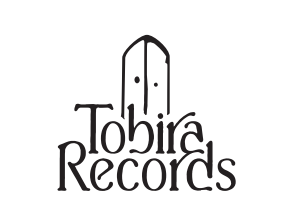
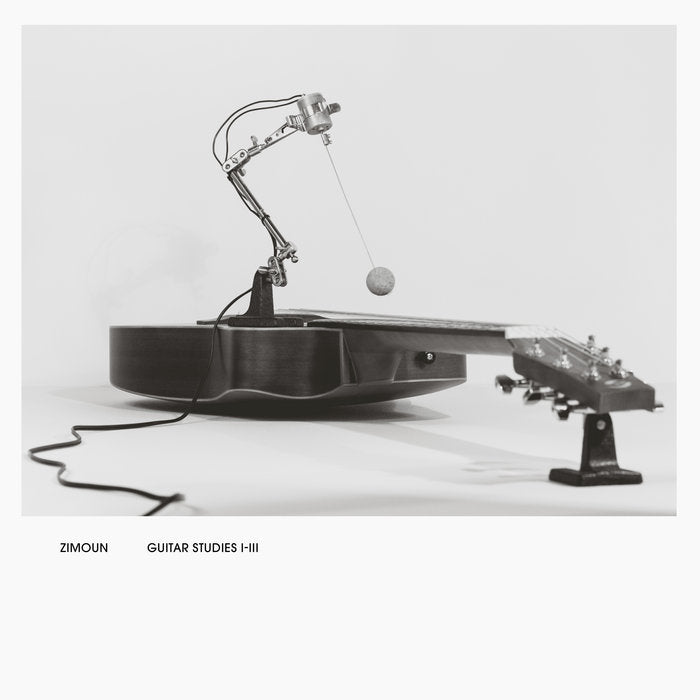
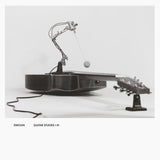
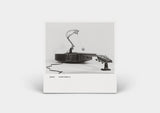
![Natalie Beridze // Of Which One Knows LP [BLACK / COLOR]](https://tobirarecords.com/cdn/shop/files/on1_7feae78a-8719-45ce-80d4-fd2e81136a92_medium.jpg?v=1701421535)
![Beatriz Ferreyra // UFO Forest + LP [COLOR / BLACK]](https://tobirarecords.com/cdn/shop/files/ufo1_medium.jpg?v=1699408652)
![Eugene Carchesio + Adam Betts // Circle Drum Music LP [COLOR / BLACK]](https://tobirarecords.com/cdn/shop/files/eu1_621880fd-e908-423f-89ac-d73c971908e3_medium.jpg?v=1699408462)
